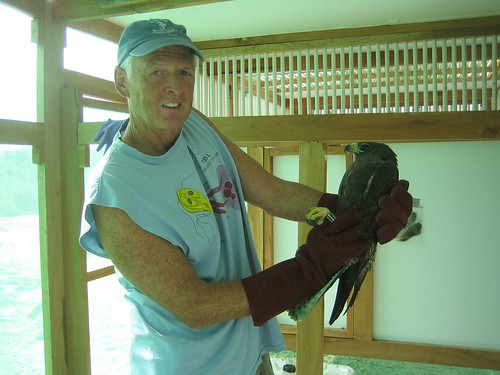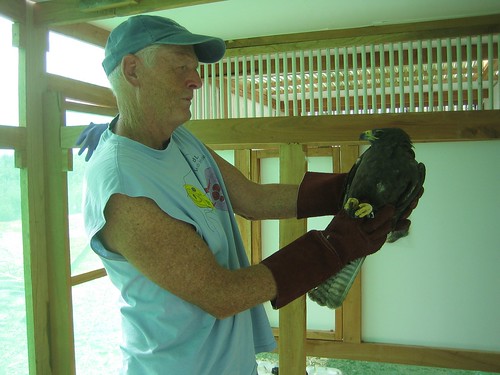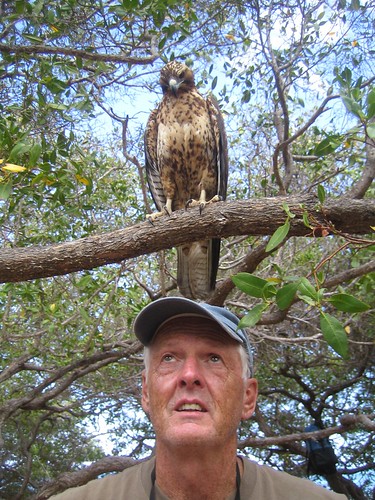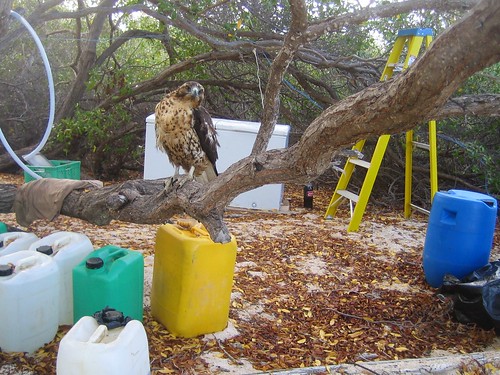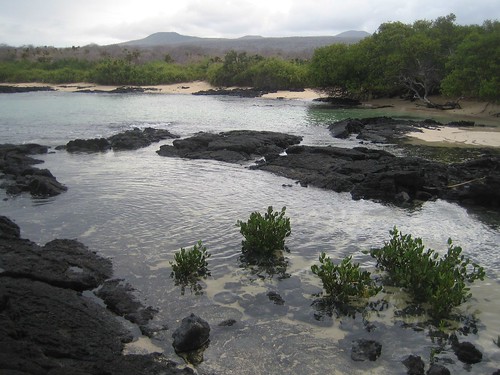I recently had a rare opportunity to assist with a Galapagos Hawk quarantine program for 12 days on uninhabited Isla Santiago. The hawks had been captured from nearby islands, one of which was undergoing a rat eradication project. The rats in question are black ship rats (Rattus rattus), an aggressive introduced species which is endangering native populations of birds and turtles. Using sophisticated GPS mapping, a helicopter dropped poisoned bait on the island. Twenty hawks had been removed to prevent them from eating the contaminated rats.
The quarantined hawks were housed in a purpose built structure on Santiago and kept in six large cages according to social group. The adults were dark brown to black with yellow feet and yellow curved beaks. The females weighed 1000-1200g and were larger than the males who weighed 800-900g.
We fed the hawks once daily from a menu of four kinds of meat. My main job as handler was to hold the hawk while the real hawk whisperer drew blood to check for parasites and general health. To handle the bird safely and securely, I grasped its lower legs between the fingers of my right hand while positioning the bird comfortably on its back on the examining table. The hawks were never vocal and did not struggle once held in this submissive position. They just fixed you with an unwavering stare as if to say, “If you loosen your grip, buddy, there will be trouble”.
In addition to the quarantined hawks, we were visited daily in camp by local juveniles looking for a free meal. Our favourite was a female who we named La Bamba after the campsite. Her plumage was mottled light and dark brown, and she had lovely sharp black talons. She became territorial and would chase away other juveniles from her new turf. She was totally unafraid and would only move if you attempted to touch her feet and even then, just a short distance.
Our camp was right on the beach under the mangroves. At night under the brilliant starry skies, we were lulled to sleep by booming surf as it broke over the offshore lava reef. One night when the tide was particularly high, I moved my tent back a few feet since it felt like the waves were lapping at my feet.
Wherever you go in the Galapagos, you are up close to the local fauna. In camp every day, aside from the hawks, you could see blue-footed boobies, pelicans, frigate birds, lava herons, lava gulls, wading shorebirds, Great Blue herons, Sally Lightfoot crabs, marine iguanas, a young sea lion and many finches.
An unforgettable experience.
More hawk photos here: http://www.flickr.com/photos/sataylor/sets/72157625985284948/
Categories:
